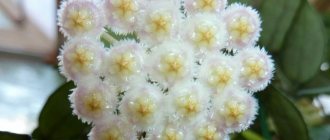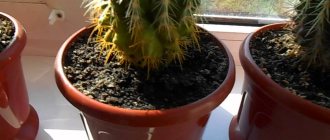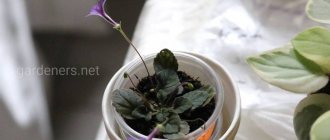We all know about such a beautiful flower as an orchid. But few people realize that the first such flowers could have existed on Earth more than 130 million years ago.
Introduced to Europe 200 years ago, orchids quickly became popular. And now, thanks to the work of botanists, you can find this plant in many homes.
Caring for a flower is extremely complex and requires taking into account many factors. But if you approach this process responsibly, then the orchid will delight you for a very long time.
Creating favorable conditions for the flower
To prevent the orchid from dying a few weeks after purchase, you need to choose the right temperature and provide the necessary lighting.
It is important to create the most favorable conditions for growth for the plant.
Choosing lighting for a plant
The orchid is a light-loving flower, but it does not require direct sunlight, but soft, diffused lighting. The lack of necessary lighting will lead to a change in the color of the leaves - they will gradually lighten, stretch out, and soon turn yellow.
At the same time, in summer you need to cover the plant from direct sunlight. After all, intense lighting can cause burns. And in the spring, you should gradually adapt the flower to solar radiation using a matte film on the windows or plastic.
In autumn, the darkening can be removed, because solar radiation is no longer too active. And soft sunlight will contribute to better ripening of shoots, better formation of shoots and the transition of the flower to a dormant state.
The climate zone greatly influences the conditions that the plant needs to create. If daylight hours in your area do not exceed 10 hours, then additional artificial lighting using fluorescent lamps is required.
Watering: the golden mean
In nature, orchids grow in places with very high humidity. Therefore, at home you need to ensure that the substrate, and therefore the roots, is always saturated with moisture. But remember that overwatering can lead to rotting of the roots. It is generally believed that weekly abundant watering is quite sufficient, with the exception of hot periods (temperatures above 25 C°). Place the pot in a bucket of water for 30 minutes so that the water level is no higher than the rim of the pot. Water should not get on the young shoots of the plant. In addition, you can spray the surface of the substrate, and sometimes the leaves, with a spray bottle if it is very hot. The exception is miltonia; its leaves become stained after water gets on them. Water for irrigation should be at room temperature and without calcium. Only Paphiopedilum likes slightly calcined water.
Air humidity. To maintain the air humidity necessary for orchids at home, you can place a home fountain next to the plant and use a humidifier. Or the simplest option is to place a container of water next to the plant.
Creating a comfortable temperature regime
To choose the right temperature, it is necessary to take into account the differences in requirements for individual groups of orchids:
Heat-loving flowers (phalaenopsis, dendrobiums) need warm temperatures all year round. Summer mode 15-32 degrees and winter mode 15-18 degrees Celsius are suitable for them. In this case, the temperature difference during the day should not exceed 3-5 degrees.
Medium-temperature orchids (odontoglossums, miltonias) prefer cooler conditions. In summer the temperature should be 18-22 degrees, and in winter – 12-15 degrees.
Cold-resistant plants (Australian dendrobiums, paphiopedilums, laelias) grow at a summer daytime temperature of 22 degrees and with a winter night temperature of 12 to 15 degrees.
Reasons for non-flowering
If you put every effort into growing your orchid, but flowering does not occur, there may be several reasons for this:
- Death of old roots. In the process of death of some part of the root system, the ability of the flower to absorb nutrients and moisture decreases many times. This entails the cessation of bud formation.
- Overwatering. Excessive moisture leads to the fact that the plant does not open flowers, the buds may fade, and the root system may rot.
- Wilting of leaves. This can be caused by direct sun exposure or excessively high temperatures, especially on hot summer days or during the heating season. You should move the pot to a semi-shaded place and protect it from overheating with a layer of foam.
There are some extreme ways to force an orchid to bloom.
- "Drought". To force an orchid to bloom, some gardeners subject it to artificial drought. Thus, they make watering extremely rare for two months. Watering frequency is once a week. Additional irrigation and fertilizing are not carried out. After the first flower stalks appear on the stem, the regularity of watering is brought back to normal, and the flower is placed in a room with more intense lighting.
- Using a hot shower. To carry it out, half an hour after watering, place the pot with the plant under a hot shower for one minute. After the procedure, the plant is not moistened for two weeks.
- Use of cytokinin paste. This paste is a flowering stimulator and is widely used for flowering plants. It contains the hormone cytokinin, which can accelerate the flowering of plants. To use, wait until the peduncle appears on the stem. Then we identify a bud on it, which we slightly cut with a knife and remove the top scale to expose the bud itself. Apply a small amount of paste to the incision site and spread it evenly over the kidney. After 7 days, the orchid will surprise you with abundant flowering
Join our Facebook group
Orchid replanting and pruning
If the old pot has become small or damaged, living roots are intertwined with dead ones, the substrate has become salty or formations have appeared on its surface, then it is necessary to replant the plant.
To do this, you need to carefully remove the orchid from the pot. To avoid damaging the root, it is advisable to cut the container. The roots are cleaned, old and damaged elements are removed with scissors. The root system must be washed with clean water. Then a new composition is poured into the bottom of the new pot.
When the plant is placed in a container, new soil should be poured into the spaces between the roots. The top should not be covered. Then the soil is moistened and placed in the shade for several days.
Pruning of the peduncle should be done at the base or where there were previously flowers. The presence of dormant buds allows you to count on the appearance of lateral peduncles or children.
Remember, if cracks appear in the center of the leaves, this is evidence of sudden temperature changes or damage. Flabby leaves indicate problems with the root system or incorrect temperature, and growths and black spots are sunburn.
When the leaves rot and a silvery cobweb appears on the back side, the problem may be pests. Therefore, it is necessary to use acaricides.
Following the conditions for caring for orchids will allow you to create a blooming garden at home. These plants will delight you with their bright flowers for a long time.
The orchid has faded: what to do with the arrow, how to care for it?
After flowering, you need to decide what to do with the peduncle. There are three options:
- Remove completely , cut as close to the bottom as possible. Especially if it starts to dry out.
- Shorten to a living bud . To do this, cut off the arrow above the first bud under the withered flower. There is a possibility that a branch begins to grow from it, and the orchid blooms again.
- Leave untouched . In this case, after 2-3 months it may begin to grow in length again, and flowers will appear on it.
After flowering, it’s time to replant the phalaenopsis and change its care: reduce watering, as well as the amount of fertilizer applied. This will give the plant a little rest.
Do I need to remove the spent stem?
Not necessary. If the peduncle does not yet turn yellow, this means that it has not dried out and can bloom again. True, there will be few flowers, and they will be smaller. If it begins to turn yellow and dry out, prune it.
Photos of orchid care
leave a comment
Click to cancel reply.
You must log in to post a comment.











